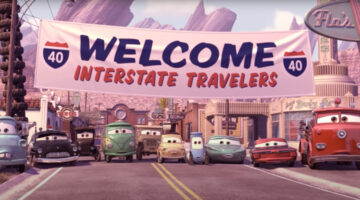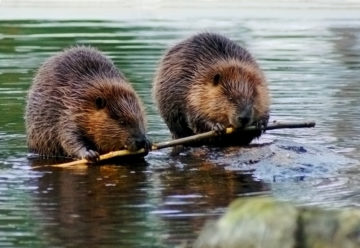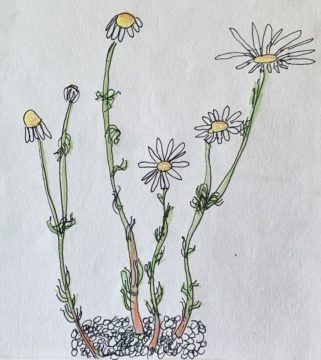by Mark R. DeLong

1.
Regular snowmobile trails bored us kids in the closing years of the 1960s. They wound through the woods, dipping here and there just enough to stall my uncle’s boxy old Evinrude machine with its odd orange and too smooth track. My cousins and I wanted slopes—frozen white waves—to test our snow jets as if we had exchanged whining two-cycle engines for surfboards and were scaling waves on Hawaii’s North Shore. The slopes we chose in winter were man-made and, now that I look at them, rather tame. Before winter idled roadbuilding, earthmovers had cut paths for a new “Interstate” outside of town, pushing the hills into the valleys and leaving steeper cut-off grades to bound highway lanes; the earthmovers leveled the roadway through the landscape. For a winter in the 1960s, the highway’s deer fence still lacked, so we could sneak through and leap our snowmobiles over the edge of the snowy wave. We carved track parabolas up to its crest.
That was the story of I-35 near Moose Lake, Minnesota, where I was a child—at least before the wide interstate pavement opened to cars. I’m certain Moose Lake’s town council didn’t have as much fun with the interstate as I did with my cousins that winter. They knew what would happen to town traffic and businesses once the highway opened. It would dwindle and the town with it. The same story played out wherever a “superhighway” cut through the landscape.
They tried to avoid having their town turn into another small place where a gas station or two near the highway ramps would become the only retail businesses, and they had a plan. One could say they hijacked highway traffic to run through the town’s center on two-lane US Highway 61. You couldn’t exit and re-enter the new highway at the same interchange; whoever would get off I-35 would have to run through town to re-enter the interstate on an on-ramp at the opposite end.
It was a cunning plan. It didn’t work. Read more »



